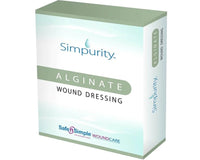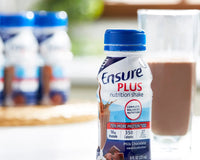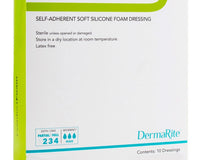Alginate hydrogel dressings are a groundbreaking advancement in wound care management, offering unique benefits for both patients and healthcare providers. Derived from natural seaweed, these dressings are designed to create a moist environment that is critical for optimal wound healing. The alginate component absorbs exudate and transforms into a gel-like substance, which helps to maintain a moist wound surface, thus promoting faster healing.
One of the standout features of alginate hydrogel dressings is their ability to manage a variety of wound types, from minor abrasions to severe, chronic wounds. The hydrogel layer provides a soothing effect, reducing pain and discomfort for the patient. Additionally, these dressings are known for their ease of use, making them a preferred choice for both professional healthcare settings and home care.
Are you looking for a reliable and effective wound care solution? Order online here for convenient shopping and doorstep delivery! At Cart Health, we are committed to providing the highest quality medical supplies to support caregivers, health professionals, and patients alike.
Benefits of Alginate Hydrogel Dressings

The benefits of alginate hydrogel dressings are numerous, making them an essential component in advanced wound management. These dressings are highly absorbent, which allows them to manage wounds with moderate to heavy exudate effectively. By transforming into a gel upon contact with wound fluid, they create a moist environment that is conducive to healing and helps to reduce the risk of infection.
Another significant advantage is their ability to conform to the wound bed. This ensures that the dressing stays in place and provides consistent coverage, which is essential for optimal healing. The gel formation also aids in debridement by promoting autolytic processes, making it easier to remove dead tissue and debris from the wound site.
Moreover, alginate hydrogel dressings are known for their pain-relieving properties. The gel-like consistency soothes the wound and minimizes discomfort during dressing changes. This feature is particularly beneficial for patients with sensitive skin or painful wounds. Additionally, these dressings are often biodegradable and easy to remove, further enhancing patient comfort and reducing the risk of trauma to the healing tissue.
In summary, the unique properties of alginate hydrogel dressings - from their high absorbency and conformability to their pain-relieving and biodegradable nature - make them an invaluable tool in advanced wound care. Their ability to promote a moist healing environment while managing exudate and providing comfort sets them apart from traditional wound dressings.
How Alginate Hydrogel Dressings Work

Understanding how alginate hydrogel dressings work is crucial for appreciating their role in advanced wound management. These dressings are composed primarily of alginate, a naturally occurring polymer derived from brown seaweed. Upon application to the wound, the calcium ions in the alginate interact with the sodium ions present in the wound exudate. This ion exchange process transforms the dry alginate fibers into a gel-like substance, which is highly effective at maintaining a moist wound environment.
The creation of a moist environment is a key factor in wound healing. It not only facilitates cellular activities necessary for tissue repair but also accelerates the autolytic debridement process. Autolytic debridement refers to the body’s natural ability to break down and remove dead or necrotic tissue, which is essential for preventing infection and promoting the growth of new, healthy tissue.
Additionally, the gel formed by alginate hydrogel dressings provides a protective barrier against external contaminants and bacteria, reducing the risk of infection. This is particularly important for patients with chronic wounds or those with compromised immune systems. The gel also helps to regulate the wound's temperature and pH levels, further optimizing conditions for healing.
Furthermore, these dressings can adapt to the wound's shape and depth, ensuring comprehensive coverage and minimizing gaps where bacteria could enter. This conformability, combined with their high absorbency, means that alginate hydrogel dressings can manage a substantial amount of exudate, preventing maceration of the surrounding skin.
By leveraging the natural properties of alginate and the body's own healing mechanisms, alginate hydrogel dressings offer a dynamic and effective solution for advanced wound care.
Types of Wounds Suitable for Alginate Dressings
Alginate hydrogel dressings are versatile and can be used for a variety of wound types, making them a valuable tool in advanced wound management. Their unique properties make them particularly suitable for wounds that produce moderate to heavy exudate. Here are some of the common types of wounds where alginate dressings are highly effective:
- Pressure Ulcers: These are injuries to the skin and underlying tissue primarily caused by prolonged pressure. Alginate dressings help manage the exudate and maintain a moist environment, which is crucial for healing.
- Venous Leg Ulcers: Often caused by poor blood circulation, these ulcers can benefit from the high absorbency of alginate dressings, which helps to manage the exudate and reduce the risk of infection.
- Diabetic Foot Ulcers: People with diabetes are prone to developing foot ulcers due to reduced sensation and poor circulation. Alginate hydrogel dressings can help in managing the exudate and providing a conducive environment for healing, reducing the risk of complications.
- Surgical Wounds: Post-operative wounds often produce significant exudate. The ability of alginate dressings to absorb excess fluid while maintaining a moist environment makes them ideal for post-surgical care.
- Traumatic Wounds: Injuries resulting from accidents or trauma can vary in severity and exudate levels. Alginate dressings are flexible and can conform to the wound shape, making them suitable for irregular or deep wounds.
- Infected Wounds: The gel formed by alginate dressings provides a barrier against bacteria, reducing the risk of infection while managing the exudate effectively.
By catering to various wound types, alginate hydrogel dressings offer a comprehensive solution for healthcare professionals and caregivers, ensuring optimal wound care for patients with diverse needs.
Application and Removal Techniques

Proper application and removal of alginate hydrogel dressings are crucial to ensure their effectiveness in wound management. Here are some steps and techniques to follow for optimal results:
Application Techniques:
- Prepare the Wound: Start by cleaning the wound thoroughly with a saline solution or an appropriate wound cleanser. This step helps remove any debris or bacteria that could impede healing.
- Choose the Right Size: Select an alginate hydrogel dressing that is slightly larger than the wound to ensure complete coverage. This helps in managing the exudate effectively and protecting the surrounding skin.
- Apply the Dressing: Place the alginate dressing directly onto the wound, ensuring it conforms to the wound bed. For deeper wounds, you can gently pack the dressing into the wound cavity.
- Secure with Secondary Dressing: Since alginate dressings can become gel-like upon absorbing exudate, a secondary dressing such as a gauze pad or adhesive bandage is often required to hold it in place.
Removal Techniques:
- Monitor the Dressing: Regularly check the dressing for saturation. Alginate dressings can typically stay in place for several days, but they should be changed once they reach their absorbent capacity.
- Gently Remove the Dressing: When it’s time to change the dressing, carefully peel back the secondary dressing first. Then, gently lift the alginate dressing away from the wound. If the dressing sticks, moisten it with saline solution to ease the removal process.
- Inspect the Wound: After removing the dressing, inspect the wound for signs of infection or any changes in appearance. Clean the wound again before applying a new dressing.
By following these application and removal techniques, caregivers and healthcare professionals can maximize the benefits of alginate hydrogel dressings, promoting faster and more effective wound healing.
Comparing Alginate Dressings with Other Options

In the realm of advanced wound care, alginate hydrogel dressings stand out, but how do they compare to other common dressing options? Understanding the differences can help healthcare providers and caregivers make informed decisions for optimal wound management.
Alginate Hydrogel Dressings vs. Foam Dressings:
Foam dressings are designed for highly exuding wounds. While they offer excellent absorption, they do not provide the same moist wound environment that alginate hydrogel dressings do. *Alginate dressings* not only absorb exudate but also maintain a moist environment, which is crucial for faster healing.
Alginate Hydrogel Dressings vs. Hydrocolloid Dressings:
Hydrocolloid dressings are effective in maintaining a moist wound environment but are less absorbent compared to alginate dressings. For wounds with moderate to heavy exudate, alginate dressings are more suitable. Hydrocolloids are better for low to moderately exuding wounds.
Alginate Hydrogel Dressings vs. Gauze Dressings:
Gauze dressings are the most basic type of wound dressing. They are versatile and inexpensive but do not provide the same level of moisture retention or exudate management as alginate hydrogel dressings. Gauze can also adhere to the wound bed, causing trauma upon removal, whereas alginate dressings become gel-like and are easier to remove.
Each type of dressing has its unique advantages and is suited for different wound types and conditions. However, for advanced wound management, especially for wounds with moderate to heavy exudate, alginate hydrogel dressings often provide superior benefits.
Experience the difference with Cart Health's range of advanced wound care products. Order online here for convenient shopping and doorstep delivery!









